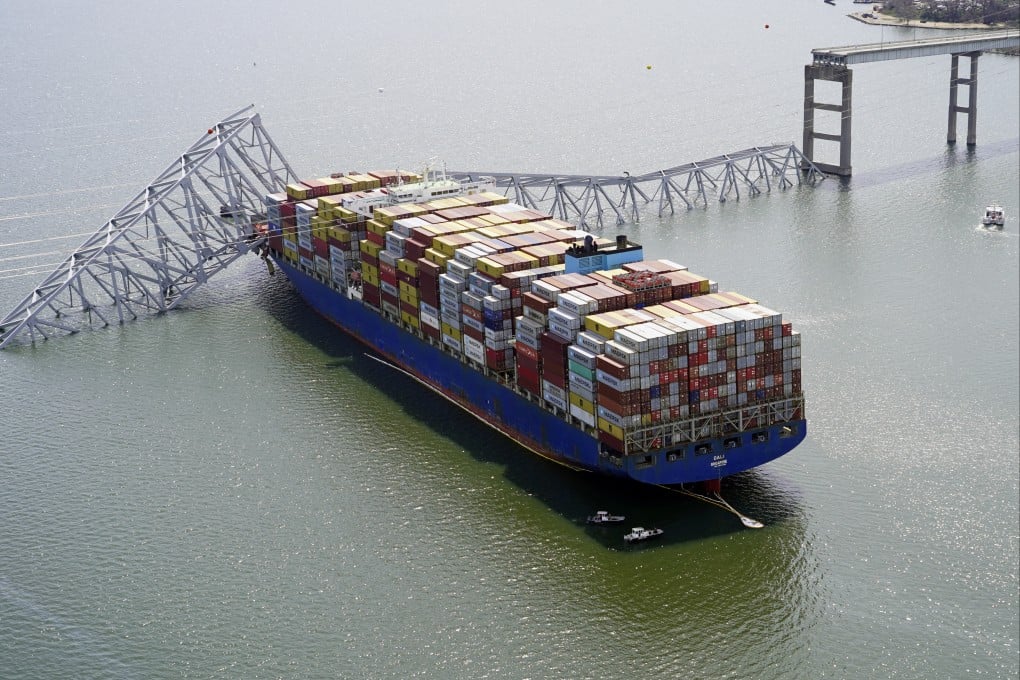Baltimore bridge collapse: ship pilot called for tugboat help before crashing into structure as 2 bodies retrieved from harbour
- Officials said the distress call was followed by a radio report that the ship had lost power and was approaching the Francis Scott Key Bridge
- Divers recovered a pickup truck containing the bodies of the two men from water near the midsection of the fallen bridge

The pilot of the cargo freighter that knocked down a highway bridge into Baltimore harbour had radioed for tugboat help and reported a power loss minutes earlier, federal safety officials said on Wednesday, citing audio from the ship’s “black box” data recorder.
The head of the National Transportation Safety Board (NTSB) also said that Francis Scott Key Bridge, a traffic artery over the harbour built in 1976, lacked structural engineering redundancies common to newer spans, making it more vulnerable to a catastrophic collapse.
New insights into the fatal disaster emerged a day after the massive Singapore-flagged container ship Dali sailing out of Baltimore harbour bound for Sri Lanka reported losing power and the ability to manoeuvre before ploughing into a support pylon of the bridge.
The impact brought most of the bridge tumbling into the mouth of the Patapsco River almost immediately, blocking shipping lanes and forcing the indefinite closure of the Port of Baltimore, one of the busiest on the US eastern seaboard.
Divers on Wednesday recovered the remains of two of the six workers missing since the crumbling bridge tossed them into the water, officials said.